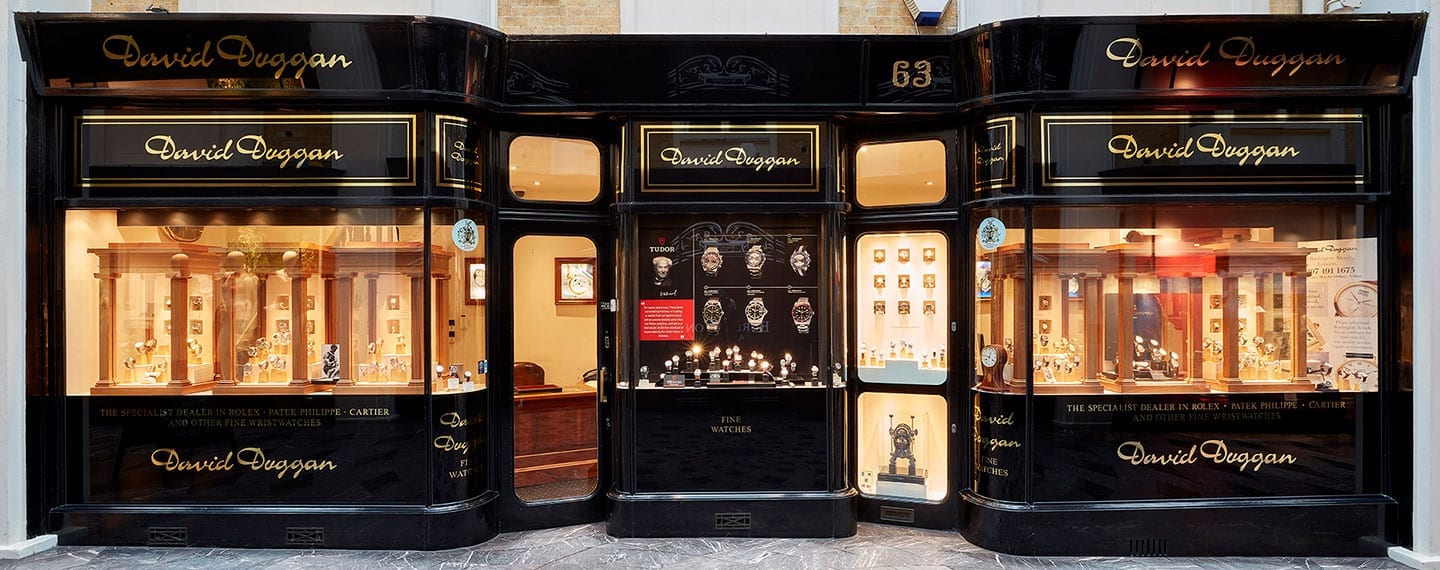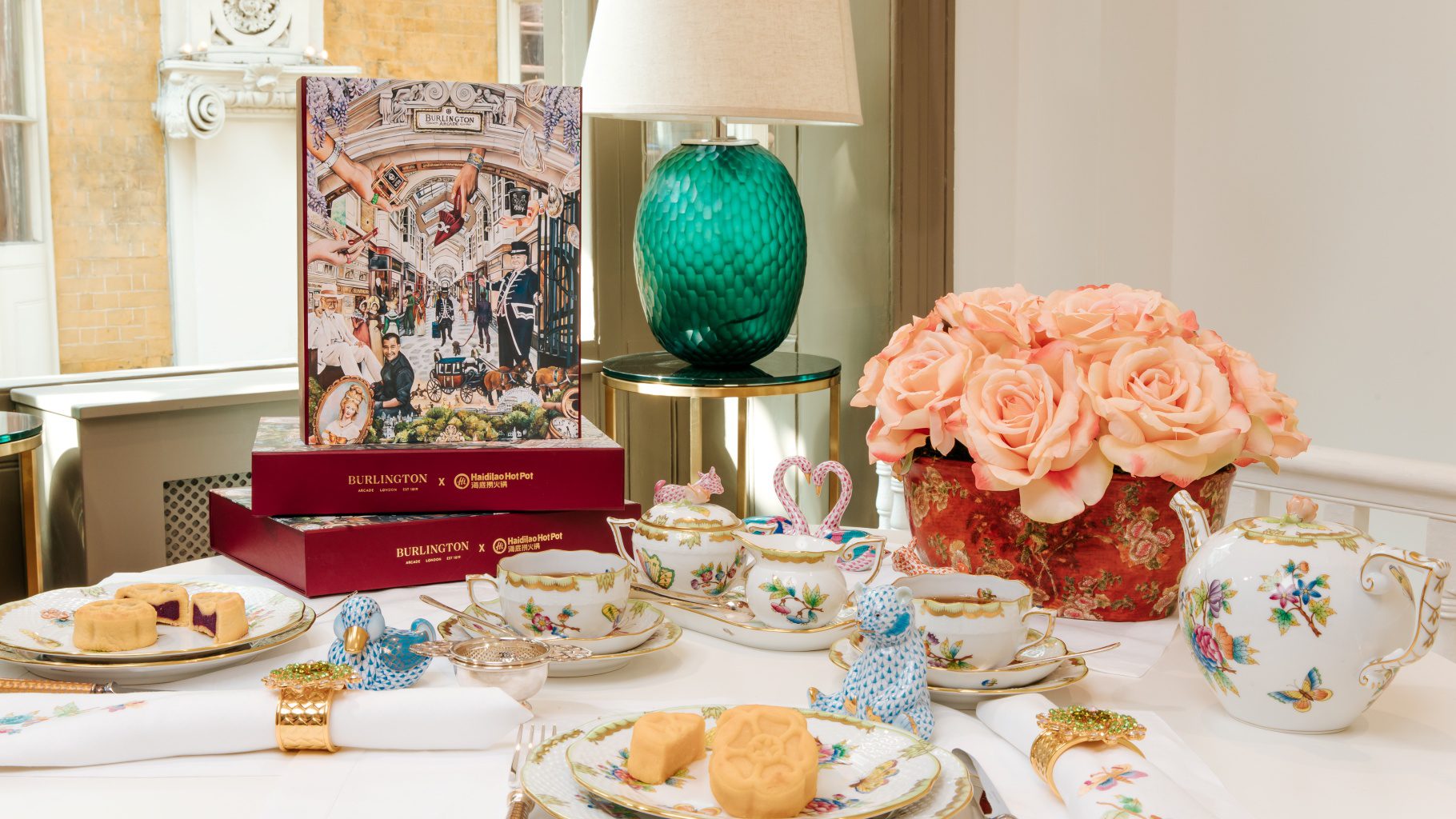We spoke to David Duggan about the key things to know if you’re buying a vintage watch for the first time.
David Duggan has been a leading figure in the world of vintage watches for over 35 years, and based in the Burlington Arcade since 2002.
Duggan was one of the first dealers to spot the potential in vintage watches. He launched the business with his late partner in business and life, Denise, who had previously managed a jewellery shop. “She gave me a bit of polish when we came down to London,” he says.
Today, he is supported by a longstanding team that has made the David Duggan business one of London’s most prestigious dealers in second-hand watches. We spoke to Duggan about the key things you need to know if you’re considering purchasing a vintage watch for the first time.

Educate yourself about the market
“I would go to a reputable auction house, such as Sotheby’s, Bonham’s, Christie’s. Ask for when their next wristwatch auction is taking place. That is a goldmine of information to start with. Discreetly, you go to the auction. It’s free. You can view the day before. You can look at all the watches. They’ve all got the estimates and the prices. Immediately, you’re learning, ‘One of those is £1,000 to £1,500.’ That’s a lovely way to learn.
“Then discreetly say, ‘If I were buying a second-hand Rolex or Patek Philippe, could you give me two or three names that you recommend?’ Auctioneers do know these people and hopefully they might go, ‘Well, there’s David Duggan. There’s so-and-so over there.’ Hopefully, there will be one of the three that you like. Then you start building up a relationship. You compare their prices.
“If you feel they’re being fair, ask them, ‘What sort of guarantee do you give?’ How did they receive the watch? Whenever we sell a watch, we put the movement number on the receipt, so it’s totally referable to us.”
Look at the dial
“Often the dials are messed about with. I love the original dial, even if it looks a bit dirty. It’s still very desirable with a wristwatch. If the watch is 50 years old and the dial is brand spanking new, it’s still saleable, but some people just want the original. The absolutely original colour. If a dial is a little bit dirty, don’t let it put you off.
“Make sure the movement is all original. How do you do that? Well, you’ve got to buy it off somebody who is reputable. You’ve got to have your receipts. You’ve got to have the numbers on there and you’ve got to have the one-year guarantee.”
Get to know your dealer
“You’ve got to buy off somebody reputable. If you think you’re getting a bargain off Joe Smith Corner Stand, you might be, but if you’re not, you could have all sorts of problems.
“We’re a member of the Horological Institute. This gives you confidence and people think well, ‘they’re members of this, they’re members of that. They’ve got a technician that worked at Patek Philippe for six years on Bond Street before he came here. I think I might buy a watch from them.’ These are things you want to know; the person’s reputation, the backup service they will give if the watch goes wrong, and the general feeling of integrity before you start making a commitment to purchase.”

Expect a good, authoritative repair guarantee
“If they give a one-year guarantee, that’s good. We give a one year guarantee. Upstairs, we have a great workshop. We are a Rolex-approved servicing centre. People say it’s one of the best workshops in London.”
Mistakes are expensive
“The only way I got my knowledge was by buying watches and learning. I made a lot of mistakes on the Portobello Road from 1985, on Saturday mornings I used to go down, and I was regarded as the mad northerner who liked to buy and I lost a lot of money. I remember at the end of 1986, Denise was pleading with me to come out of wristwatches. She said, ‘You’re losing too much money.’ I said, ‘But I’m learning. I’m learning.’ That’s how I learned quickly because it was expensive. You buy that watch and give £2,000 for it and sell it for £1,800 after a month, I won’t be buying another one of those for £2,000. The price is £1,800. You remembered. That’s how I learned.”
The right pieces will always appreciate in value
“The current craze – and I think it will carry on – is for steel Rolex sports watches and steel Patek Philippes. The Patek Philippe Nautilus is a watch that goes way above its retail value. The retail price is about £22,000, but if somebody brought [in a vintage one] today, we would pay a minimum of £30,000.
“The Rolex steel Daytona 1989, it retailed for about £1,250. Then I remember in 1990, the list [price] went to £2,700 and we used to pay £3,900. That premium has gone on since 1989. For 30 years. The latest one retails for £9,350 and today we would pay £16,000 for it. It’s a real phenomenon.”
Look at your dealer’s wrist
“This watch on my wrist, if you wanted this, I would offer it to you for sale. I wear a different watch probably every week. I like steel watches. I like leather strap watches. I love Rolex, Patek Philippe. I’m lucky in that what we sell, I really believe in. I don’t sell anything I don’t believe in. I wouldn’t have bought it otherwise. That’s one of the joys of being independent. The stuff I sell is the stuff I like to wear.”
There’s something special about vintage
“There’s character, and with Rolex and Patek Philippe [watches], they are so well made, they will last. It’s like an old piece of furniture. Why do people want to sit in an old piece of furniture? Why do people like an old vintage car? It tells a story.”

